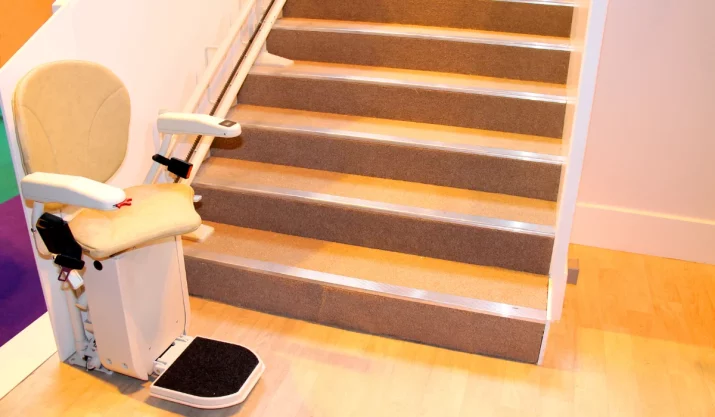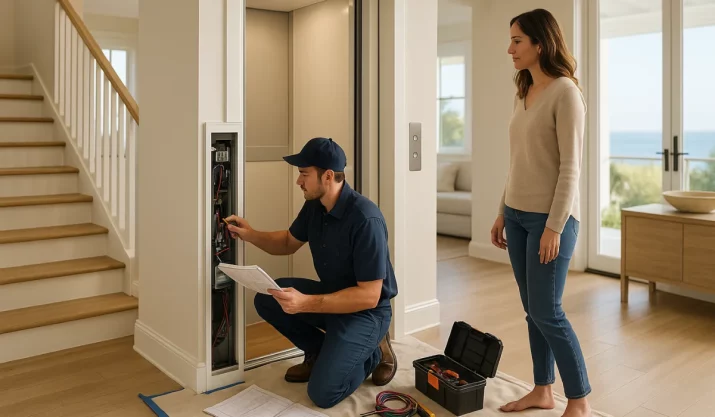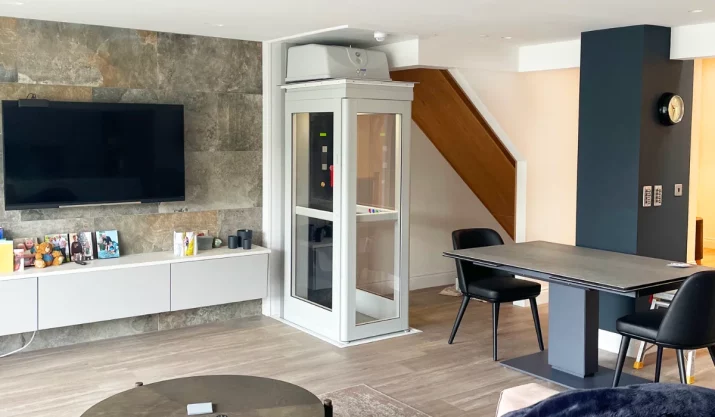7 Must-Know Stair Lift Safety Tips

Table of Contents
If you or a loved one uses a stairlift at home, safety should always be the top priority. Stairlifts are incredibly helpful for people with disabilities or limited mobility, but like any mechanical device, they need to be used and maintained properly to ensure a smooth, secure ride.
Here are seven stair lift safety tips every stairlift user (and their family members) should know.
Key Takeaways
- A seatbelt and swivel seat help you stay safe every time you get on or off the stair lift.
- The listed weight limit and safety features must be followed to avoid mechanical issues or accidental injuries.
- Items left on stairs and unexpected power outages can stop the stair lift or create a serious safety hazard.
- Annual maintenance and expert guidance from companies like California Mobility help keep your stair lift working safely and reliably.
1. Always Buckle Up Before Use
It might sound obvious, but many users forget this simple step. Every stairlift comes with a seatbelt (also called a safety belt), and using it should become second nature. Buckle up reduces the risk of sliding or falling out of the seat, especially if the stairlift makes a sudden stop or starts unexpectedly.
Even for short trips, make sure you’re securely fastened before pressing any buttons.
2. Pay Attention to the Weight Limit
Each stair lift model is designed with a specific weight capacity. Exceeding the maximum weight limit can affect the stair lift mechanism and lead to serious injury or mechanical failure. Most models clearly display their weight limit near the seat or in the user manual. If you’re unsure whether your chair lift can handle your needs, speak with a stair lift expert.
Bonus Tip: Don’t carry heavy items while riding the stairlift. It may seem like a time-saver, but it could throw off the lift’s balance or block safety sensors.
3. Keep the Path Clear—Top and Bottom of the Stairs
Always check for objects near the top of the stairs or bottom of the stairs before using the lift. Pets, toys, shoes, and even a misplaced bag can create a tripping hazard or block the stairlift from parking correctly. A blocked path can also stop the lift mid-ride if your unit has safety sensors—an essential feature in most modern stair chair lifts.
Encourage all family members to keep the staircase area clear to help keep the system running smoothly.
4. Use the Swivel Seat Properly
Swivel seats are one of the most important safety features on a stairlift. They allow you to safely sit down and get up without twisting or overreaching. When you reach the top landing, always lock the swivel seat in place before standing up. This keeps the seat stable and reduces the risk of falling down stairs.
Some curved stairlift models even come with power swivel seats for easier operation.
5. Never Override the Safety Features
Stairlifts come with built-in safety features for a reason—like obstruction sensors, armrest controls, seatbelts, and footrest sensors. Don’t attempt to bypass these systems, even if you’re in a rush. They’re there to protect you.
If you suspect something isn’t working properly, like the footrest isn’t folding up or the safety sensors are overly sensitive, contact your provider or technician. Safety should always come before convenience.
6. Know What Happens in a Power Outage
Most stairlifts are battery-powered, meaning they’ll still work during a power outage—for a little while. But how many trips it can make before needing a recharge depends on the model. It’s smart to know how your stairlift behaves during a power outage and what your options are.
If you’re considering a new model, ask your stair lift expert about battery backup performance and how long the lift can run without electricity.
7. Schedule Regular Maintenance
Routine check-ups are key to stairlift safety. Like any mechanical device, your lift needs periodic inspections to keep it in good working order. A technician will check things like the rail alignment, stair lift mechanism, safety sensors, and battery life.
Don’t wait for something to go wrong. If you’re using your stairlift daily, we recommend a professional check-up at least once a year. Bruno stairlifts and other high-quality brands often come with maintenance schedules—follow them closely for peace of mind.
Safety First, Always
At California Mobility, we believe stair lifts should help you feel secure and confident in your home. But safe use starts with the right habits — and the right model for your needs.
Whether you’re exploring straight or curved stair lifts, it’s important to ask about safety features, weight capacity, and professional installation. And if you’re helping a loved one, we’re here to support you both from day one.
Not sure where to start?
Get in touch with our expert to find a stair lift that checks all your safety boxes.
Disclaimer: California Mobility is not a medical provider. If you have specific concerns about stair lift use and your health, please consult a medical professional.






